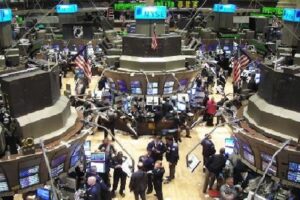US job openings fall as demand for workers weakens

WASHINGTON, D.C.: U.S. job openings fell in July, signaling a potential cooling in the labor market, according to the Labor Department’s latest report.
Employers posted 7.7 million job openings in July, down from 7.9 million in June and marking the fewest since January 2021. Job openings have steadily declined this year, dropping from nearly 8.8 million in January.
While layoffs rose to 1.76 million in July, the highest since March 2023, they are still in line with pre-pandemic levels, when the unemployment rate was historically low. Employers, recovering from the pandemic recession, have generally avoided large-scale layoffs, opting instead to retain workers.
In contrast, hiring picked up in July, with 5.5 million new hires after hitting a four-year low of 5.2 million in June. The number of workers quitting their jobs-a sign of confidence in the labor market-also increased slightly to 3.3 million. However, this is still well below the peak of 4.5 million in 2022, when workers frequently changed jobs as the economy rebounded from the pandemic.
The lower level of quits suggests wage increases may remain modest, which could help ease inflation.
Stephen Stanley, an economist at Santander, noted that while job openings have decreased, labor demand is still about 7 percent higher than in 2019.
“Labor demand is still solid, albeit moderating,” he said.
Job openings in July fell sharply in sectors like health care and government, while manufacturing and professional services increased. Despite the drop in job openings, there are still 1.1 job openings for every unemployed person, a sign that the demand for workers continues.
The report on job openings is part of several labor market indicators the Federal Reserve monitors closely. The Fed may adjust its interest rate policies depending on how the job market evolves in the coming weeks. Upcoming reports on unemployment claims and monthly jobs data will provide further insights into the health of the labor market and help determine whether the Fed will cut rates aggressively or take a more measured approach.



